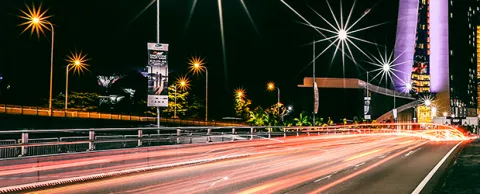
Connected cars are speeding their way into your city. If you haven’t given any thought into how they fit into your city, the new research below from IDC may add a bit of urgency to those discussions.
But it doesn’t stop there. At the Council, we often talk about breaking down city silos. To be a smart city, every element needs to work together toward a common goal. And the IDC report shows that cities and automakers can’t afford to be separated by silos either.
Urban transportation is changing rapidly. The changing role of the automobile is a big part of that. Here’s some advice for getting it all to travel together toward the same desintation. — Kevin Ebi
By Heather Ashton and Ruthbea Yesner Clarke, IDC
Urban mobility and the role of the automobile are undergoing a profound change. This transformation is driven by changing attitudes toward car ownership, new and disruptive models of mobility, increased focus on the environmental impacts of driving and congestion, and a rising concern over the impact on quality of life related to how residents, workers and tourists move.
The connected car evolution has been ongoing for more than a decade, as automakers increasingly leverage software and Internet connectivity to automate, enhance, and adapt vehicle systems to improve safety and operations. Smart cities are a more recent concept to leverage the 3rd Platform to transform how cities operate, the services they provide, and their relationship with residents, visitors, and business. However, cities have embedded technology in transportation systems for many years, from traffic control signaling to traffic cameras to transponders.
With the rise of the connected car (and hyperconnected residents), smart cities are even more focused on using connected devices and software to create smart streets, which provide safer, multimodel roads and reduce urban congestion. IDC forecasts that worldwide spending in 2017 on connected vehicles will be $29.6 billion and government spending on intelligent transportation systems will be $16.5 billion (see IDC's Worldwide Semiannual Internet of Things Spending Guide, May 2016; connected cars are a subset of Connected Vehicles).
Our research has shown a need for automotive OEMs and city leaders to collaborate to proactively address the interaction of the connected car on today's city street, accelerating the pace of change in urban mobility services. In our recent report, IDC PlanScape: Collaboration Between Automotive OEMs and City Leaders for Implementing Connected Cars and Smart City Solutions, we explore some of the key areas in which collaboration can occur between automotive OEMs and city leaders to advance new mobility models.
Consider some of the trends in today's urban environment:
- Traffic congestion is worsening. The TomTom Traffic Index 2016, which tracks the congestion of 295 cities across 38 countries, shows that traffic congestion is up 13% from 2008. In the U.S., the average commuter spends 42 hours per year in congestion, a full work week!
- Cities and Automakers are working to curb C02 emissions. In response to a desire for carbon neutrality that cities like Copenhagen are achieving, U.S. federal government mandates are setting targets for reduced C02 emissions, and cities and automakers are both working to meet or exceed them.
- The car's role is changing. Urban dwellers are looking for alternatives to private car ownership, and new mobility options like car sharing and the development of autonomous vehicles is transforming how the car will interplay within the city. Additionally, connectivity features that enable an immersive experience are defining new roles for the car on the city streets, as the passengers pass through their daily activities.
To succeed, these two groups must work together, specifically around key overlapping service areas. We encourage that automotive OEMs leverage the automotive ecosystem by working with industry groups to engage with cities as a collective. This will not only drive standards adoption but also streamline progress.
Additionally, we recommend that smart city officials publish smart street strategic plans online, and proactively alert automotive associations that details are available. This will help inform OEMs of the short- and long-term goals of cities and enable them to consider the implications on their services and investments.
The sooner leaders from both sides work together, the more quickly we will see the positive impact on connected car adoption and interaction with the city environment.
The Smart Cities Readiness Guide…
The Transportation chapter of the Smart Cities Readiness Guide provides a variety of resources and expertise in how cities can and are developing smart transportation systems and improving their investments and budgets by integrating smart technologies. It also addresses the building blocks of a smart system, from data and analytics to asset optimization and situational awareness. And case studies offer real world glimpses into how cities around the world are successfully keeping commuters moving, increasing operational efficiency and doing it for less cost.



